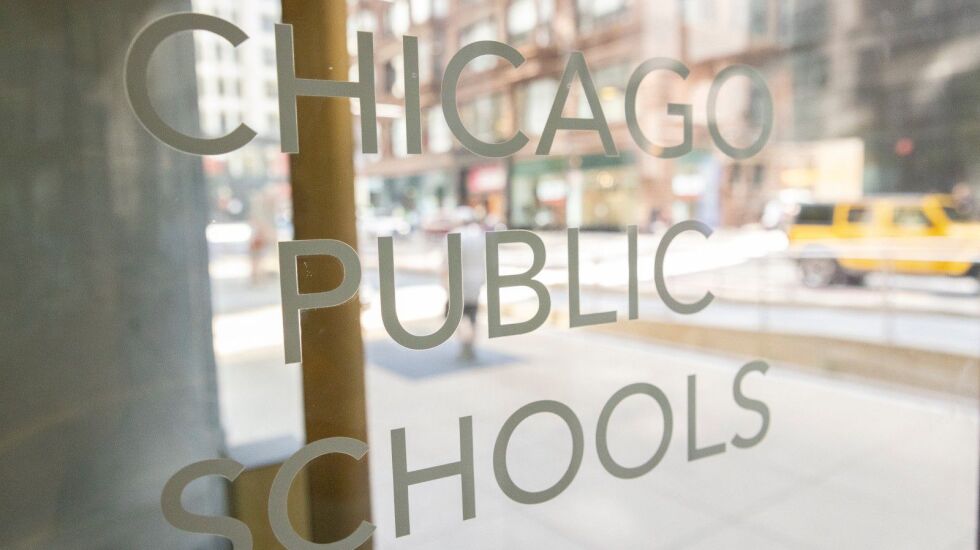
New research challenges two factors many see as driving inequities in funding between Chicago’s more than 400 public elementary schools.
Researchers with the Federal Reserve Bank of Chicago looked at Chicago Public Schools’ per-pupil budgeting system, which was introduced 10 years ago. They also looked at private fundraising, such as “friends of” groups which many see as tipping the balance in favor of wealthy schools.
They found, contrary to a view held by many, that CPS’ per-pupil budgeting model, called student-based budgeting, has actually led to greater equity across the school system, with more dollars flowing to elementary schools with mostly low-income students and fewer dollars going to the most affluent schools. Many people have been critical of this budgeting model because they say it undermines schools as their enrollment drops.
The researchers also found that private fundraising by schools that serve the wealthiest students has undermined the equity gains somewhat by boosting revenue going to the most affluent schools.
CPS officials said they are not surprised student-based budgeting is creating more equity because leaders have made it a priority. They note the study looks at funding until 2019 and since then, they say, they have taken even more “aggressive and intentional” measures to advantage schools serving students with the highest needs. They say they are continuing seeking ways to make school-level funding more fair.
The pros and cons of CPS’ budgeting approach
The research is part of a broader look at school-level spending in CPS in a paper titled “Are Friends of Schools the Enemy of Equity? The Interplay of Public School Funding and Private External Fundraising.”
With the introduction of student-based budgeting in 2013, CPS officials started adjusting how much schools got based on enrollment as well as on the number of students at different grade levels and how many were receiving special education services. Principals also got more flexibility in how they could spend the money. This new approach was aligned with a market-driven approach to education in which schools compete for students and money follows students.
Previously, central office administrators sent each school a set number of staff positions based on their expected enrollment and offered little flexibility.
But student-based budgeting has come under fire in recent years and the district is moving away from it. The main criticism is that as enrollment plummets, schools lose funding, forcing them to cut programs, which then makes it harder to attract students.
When Brandon Johnson was running for mayor, he said student-based budgeting had a “devastating impact” on schools.
“SBB, in particular, has contributed to principals, whose budgets are strapped, to choose between keeping a veteran teacher or having a librarian and a functioning library,” he wrote in his campaign platform.
Yet the researchers found student-based budgeting has been reallocating money to the neediest schools. Ten years ago, per-pupil spending at schools with more than 80% low-income students was only $213 more per student than at schools with fewer than 20% students considered low income. By 2019, that gap had grown to $1,629 as low-income schools got more per pupil and wealthier schools got less.
“What we find suggests it is creating more equity in Chicago, and I think I would want the district to think twice before undoing that,” said Lisa Barrow, a senior economist and economic advisor at the Federal Reserve Bank of Chicago. But she also points out that her team only looked at elementary schools and that some schools, particularly extremely small ones, might not benefit under student-based budgeting.
It is well established that schools serving poor students need substantially more money than schools with affluent students to adequately educate their students, who have more needs.
The researchers say the shift of resources to schools with low-income students under student-based budgeting is likely due to many factors. Among them: Schools serving more affluent students tend to have more experienced teachers who are more expensive. These schools are likely at a disadvantage under SBB; If they keep their more experienced teachers, their dollars don’t go as far.
These schools benefited under the old method of distributing money, which awarded teacher positions regardless of cost to schools based on student enrollment.
The fundraising advantage
At the same time CPS shifted its budgeting approach, fundraising at some schools, especially in affluent neighborhoods, took off. The researchers found that most schools fundraise, but only a small number serving few low-income students generate substantial sums. Fundraising among those schools during the time period studied, 2014 through 2019, increased.
These schools tend to use fundraising revenue on personnel and instruction, the researchers found. As a result, fundraising narrowed the per-pupil spending gap between schools with the greatest and fewest low-income students by 26% to 39%.
Other school districts have opted to redistribute money raised by individual schools across a range of schools, but the Federal Reserve researchers do not recommend that approach for Chicago because so few schools raise a significant amount.
“If you were trying to spread this across all the schools, it would be pretty negligible,” Barrow said. “And that assumes that it doesn’t change the amount of money that organizations would raise if you were spreading it around. Parents may, if they’re motivated to help their own school, they may not be motivated to help the district as a whole.”
Rather than addressing fundraising, Barrow said policies like student-based budgeting and equity grants that target certain schools do more to combat inequity.
Sarah Karp covers education for WBEZ.







